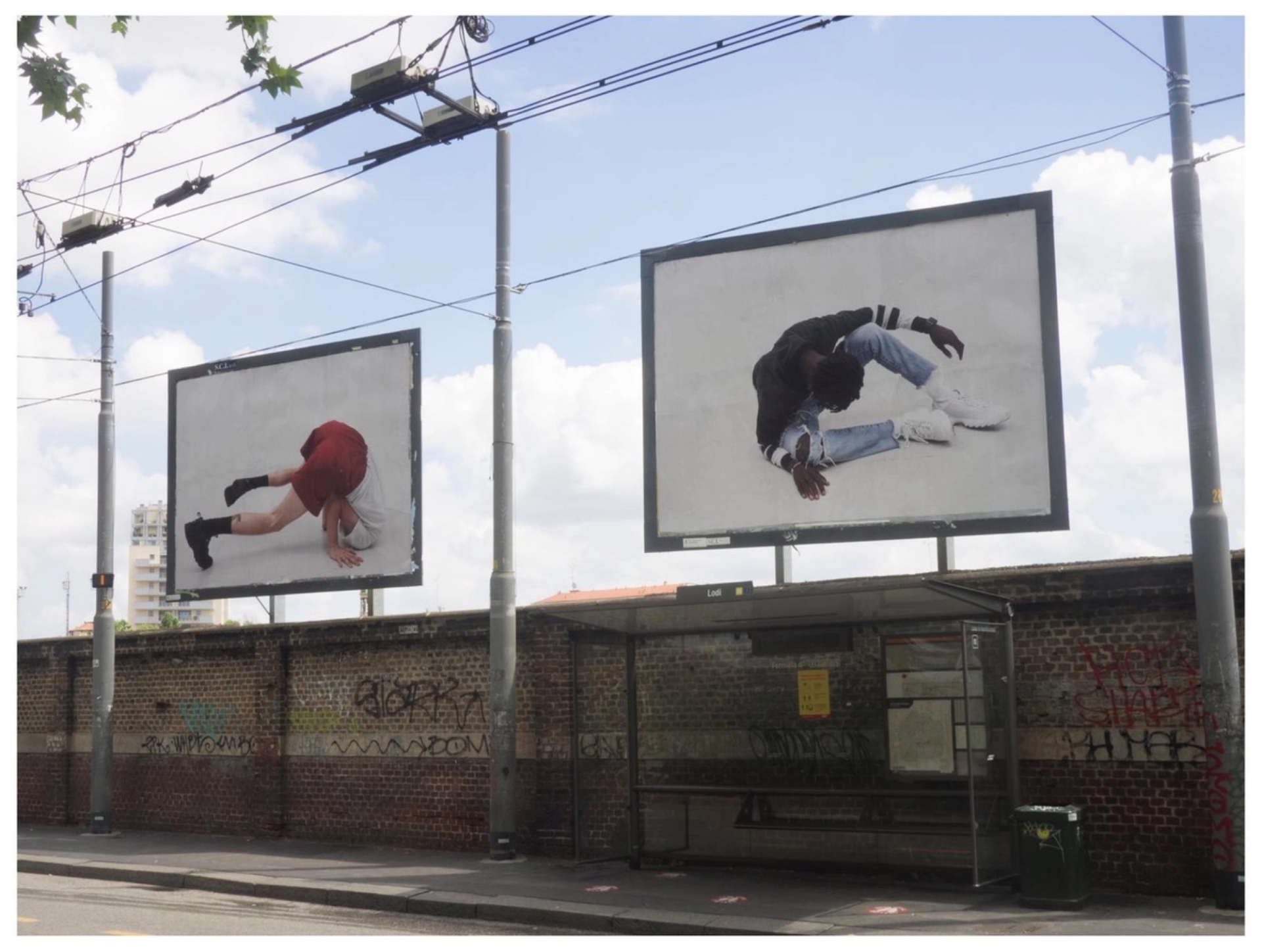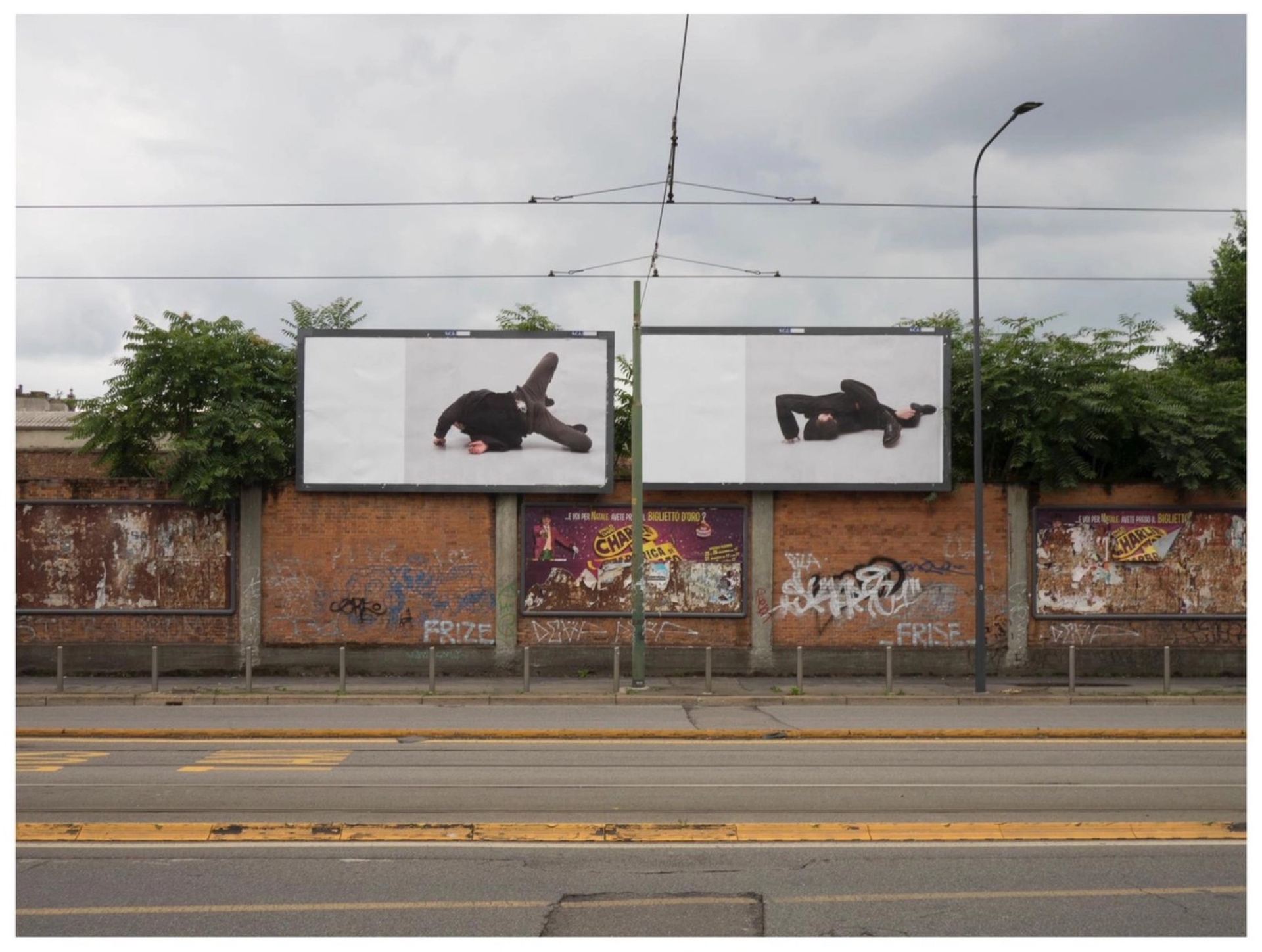Ciao, Milano: Billboard Takeover Rebrands the Post-COVID City
Like everyone living in Milan, our colleague CARLO ANTONELLI – journalist/creative director and former editor of Italy’s editions of GQ, Wired, Rolling Stone – experienced the earliest and longest COVID lockdown in Europe. By the time the country began to reopen in May, Lombardy, home to the Italian economic capital, had reported the highest regional death toll on the continent. As the country moved into “Phase 3” in mid-June, billboards bereft of advertising (it’s the first budget to go in any crisis) began to repopulate around Milan – not with the usual marketing, but with imagery reflecting the collective whiplash experienced of a city thrown first indoors, then outside itself. Antonelli found the work so resonant that he decided to write us a letter about it.
Cari redattori,
It is hard to imagine a representation of Milan as much in touch with the state of the city in the last four months as much as a recent project by photographer/artist Alessio Bolzoni (Action Reaction, scheduled June 11–26, 2020, though it has yet to come down). Scattered around the city in key locations, the artworks took over 26 billboards left empty as the 2020 pandemic caused the Lombardy region and its capital to spiral down into the abyss. It is truly public art.
Until early March, Milan had been skyrocketing, flying relentlessly upward for at least the last 4–5 years, breaking many records among global cities for economic growth. Then, all of a sudden, the engines stopped. In one second, the rocket turned around and fell back to Earth.
The blood disappeared from the body of the city. Nothing was rushing anymore. Ciao, and bye bye.
Newly branded, the city skyline became something out of Escape from New York, the 1997 film by John Carpenter (the same guy who made The Thing – another masterpiece, speaking of fear and infection.)
Outside, a ghost town: a few round-shouldered passers-by carrying yellow grocery bags (a vessel also promptly employed by drug dealers eager to scale up their networks), misfits in a De Chirico-esque void, a few elderly on a kamikaze mission. Secret meetings of youth. The whole downtown deserted.
The thousands of cars—police, Carabinieri, Guardia di Finanza, even the army—patrolling everywhere caused a reptilian wave of terror among Italians fearing imminent liberticidal dictatorship. Even Giorgio Agamben, with his extraordinary and apparently senescent brain, fell for the anti-democratic conspiracy (though he was promptly crucified by the intelligentsia).
In fact, it was only the resurfacing of the old Italian knowledge of past pestilences and plagues that kept everybody properly behaving and staying at home.
I will refrain from talking about the transition that occurred within the ecosystem already remotely connecting roughly half of the world’s population —it was a ready-to-go, established practice, now mega-escalated. Three fifths of our bodies were already there, inhabiting the digiworld. If loss or infection didn’t break you, though, it meant that life wasn’t so bad after all.
Neighborhoods were somehow at their most beautiful, with days of a spring splendor seemingly never before seen in Milan – at least not from a window, and not for weeks on end. (Restrictions were so tough that one would run out of excuses even for a five-minute walk around the block.) The other 2/5 of our bodies – the not-yet-digitized parts – would set off every day on a journey of no return. Through un-smart working, twelve hours in a row in many cases, time-space suddenly cleared out: we were somehow freed, having finally cracked the enduring Habsbourgeois imperative of formal efficiency that has always characterized the city of Milan, lurking beneath even its shiny, luxe-cool veneers.
Everything had blown away. You could drive around the Prada Foundation—if you had a strong legal reason to do so, of course— and find it looking like a ruin. It was the same with Sanaa’s new Bocconi University building, a Milan masterpiece left unfinished and awaiting a destiny of students who may never come to campus.
After a while – though it’s a feeling that has finally begun to lift now – you would find yourself thinking that any and all outside movement was, simply, useless.
While ambulance sirens wailed, a death knell every ten minutes, we got into a new sort of drug, one seemingly of animal, not vegetable, origin. It is an astounding state the body enters when cooped up inside – one without a doubt enabled by the comfort of the home clothes we inhabit there, too. We collectively started to convulse in an endless stream of meetings on Zoom and Teams, living our lives on Fortnite and Discord and Instagram – actually Twitching – each event rigorously attended in impossible postures.
The pervasiveness and fear of death, and the reclusion (in spite of the government’s best intentions), resulted in novel, previously untested contortions. New muscles and movements emerged from previously un-flexed zones, often painfully. Old folds, once newly un-folded – yes, I am paraphrasing Deleuze – opened up entirely new spaces for a different type of bodily life.
One thing much talked about in the city: the flight back to the countryside and the end of the too dense, too traffic-congested metropolis; the opportunity for a new urban plan that resettles the center into accessible 15-minute nuclei. (Actual new plans have already been conceived, by the biggest brains in urban design.) Endless discussions about a possible future.
The truth is that life in the void generated an alien convalescence. If I felt we had already “made it through” whatever this is, I would call it post-traumatic dizziness. But the emotional contortion of that trauma still envelops the city as we move endlessly into the famous “Phase 2,” “Phase 3,” “Phase …,” and no one seems relieved to get “back to a new normal.” Quite the opposite. Deep down, we all want a revolution.
Maybe this “revolution” looks like those holy men in the old Rossellini movie, spinning in circles until they fall in the right direction. Only if I contort myself, if I lose balance – only if I “break the nose of every beautiful thing,” as Madame Blanc says in Guadagnino’s Suspiria – will I finally change course, maybe slowly or painfully, but at least for good. Bolzoni’s bodies, suspended in voids around the city, remind us of unexpected tangles, rotations, injuries that induce new movements. Still short of a cure, what these new openings have revealed, at least, is a longing for humanity and harmony the city didn’t even know it had.


